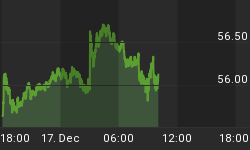One way to determine inflation expectations is to take the treasury or nominal yield (not inflation adjusted) and subtract the TIPS or real yield (inflation adjusted). The difference of the two is the expected inflation.
Nominal Yield (minus) TIPS = Inflation expectation
The chart below shows inflation expectations across various maturities using the above formula.

A few interesting points to make from the data
A few months prior to the end of QE1 in the Spring of 2010, inflation expectations began to come down. The same time economic data was pointing towards a double dip recession.
By the summer of 2010 after QE1 was completed inflation expectations had fallen on average from 2.2% to 1.7% That is when the Fed began to "fear deflation."
QE2 was then announced and inflation expectations moved above the highs during QE1 and currently stand at 2.6%, well above the Fed's target of 1-2%.
In April 2010 inflation expectations peaked and it is quite possible assuming QE2 does end in June that the same is happening this April. The Fed could use the cover of lower inflation expectations before formally launching QE3 and if history repeats itself they will only need a few months. Considering the wall the US economy hit this past month, that may be more than it can handle this summer.















